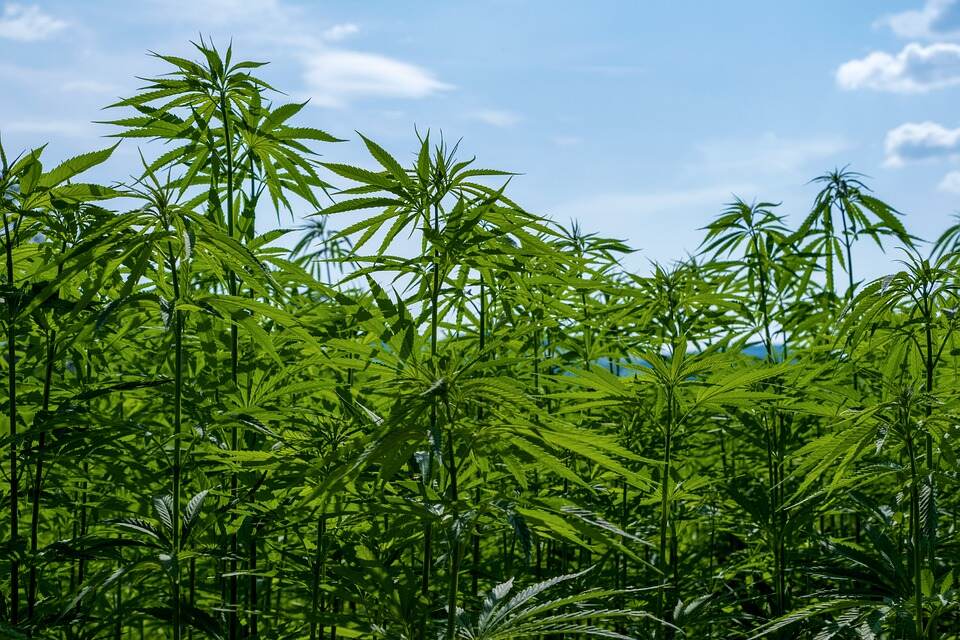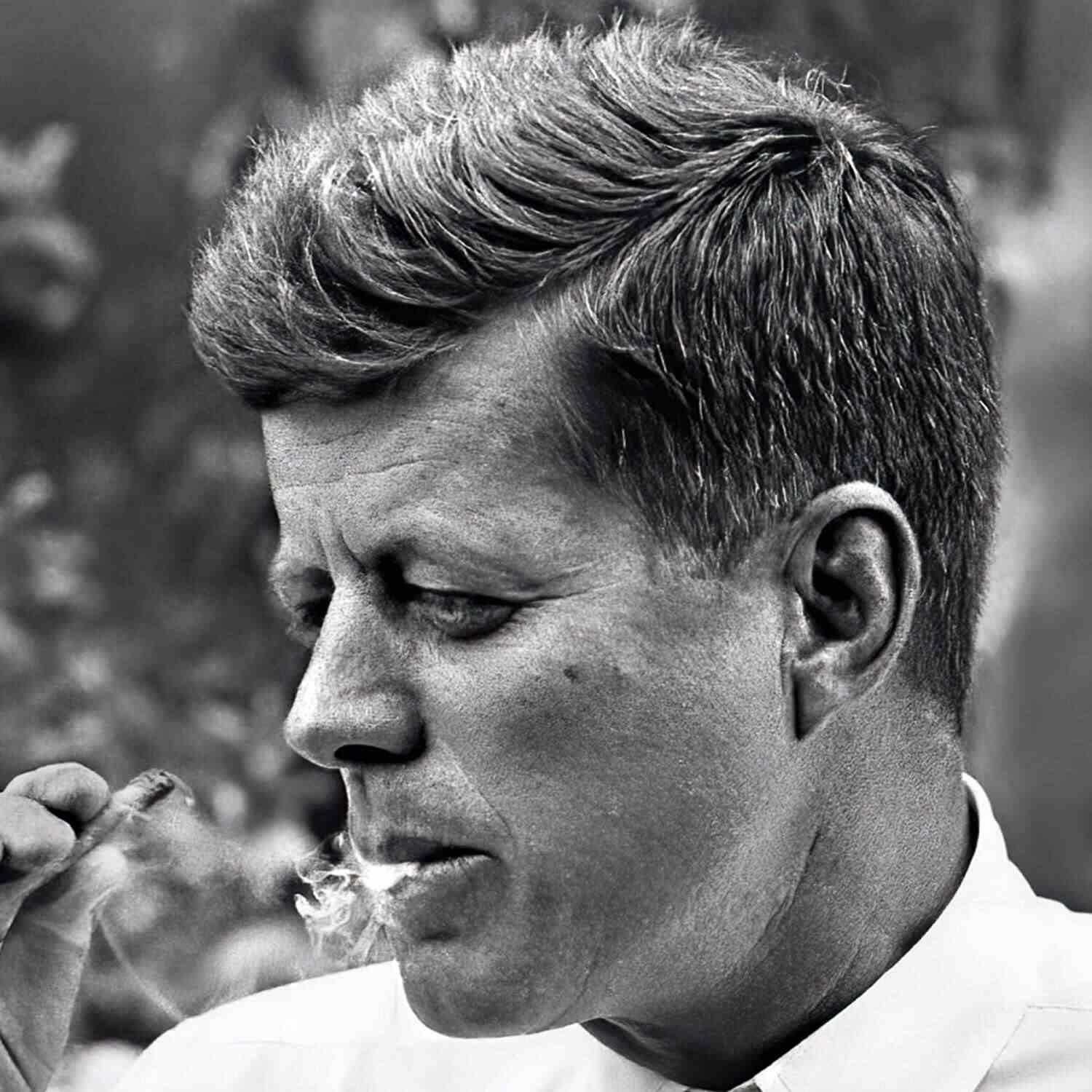George Washington. Christopher Columbus. William Shakespeare. Joan of Arc. Thomas Jefferson.
What do these behemoths of human history have in common? All were rumored to have smoked weed at some point or another, and they aren’t alone. Numerous past celebrities have been cited for doing the same, but not all of these claims have factual footing. Some are true; others are speculation, lacking enough evidence to be conclusive; and still, more are outright fabrications. In honor of President’s Week, we’ll be scrutinizing the reefer rumors surrounding those who have sat in the Oval Office, as well as the Executives who may have imbibed before the Oval Office even existed.
Distinctions and Blurred Lines
The farther back in history we go, the more difficult it becomes to substantiate or dismiss allegations. Language is ambiguous, evidence is scarce, and primary sources are gone. Yet one common point of confusion can be identified as the source of many early marijuana rumors. The hemp plant, almost identical to marijuana through layman’s eyes, was wildly popular in the ancient world and remained so until the 20th century.
Almost every landowner in colonial America farmed hemp. At the same time, those who didn’t grow it found themselves wearing it after the Revolutionary War. In 17th-century Britain, hemp was an antidepressant and a treatment for opium withdrawal. Paper was made from it, as well as ship sails and rope. Countless letters and journal entries discuss farming, trading, and smoking hemp. Hemp, however, is not marijuana. It’s a plant with different properties and different applications. As its prevalence waned in the modern world, misunderstanding began to surround it, giving rise to rumors.
Difference Between Hemp and Marijuana
Though a third of Americans believe they’re synonyms, hemp and marijuana are actually two separate plants in a family called Cannabis sativa. Both contain the cannabinoids CBD and THC, but marijuana contains them in much higher quantities than those found in the hemp plant. Tetrahydrocannabinol, or THC, is the psychoactive compound responsible for the “high” associated with marijuana use. In hemp, THC has a potency of less than 0.3%. In contrast, THC levels in marijuana range between 6% and 20%, making hemp products ineffectual for use as a psychedelic. Cannabidiol (CBD) does not contain THC or possess any psychoactive properties but has been shown to affect anxiety levels, appetite, and more. Despite containing lower levels of CBD than its sister plant, hemp has potent medicinal powers. It is the source of commercially available CBD products.
What is Hemp?

Hemp, sometimes referred to as ‘industrial hemp,’ was first cultivated in Central Asia before being introduced to Africa and Europe. The plant is hearty and can grow in a number of climates, making it an ideal candidate for botanical superstardom. When processed, hemp stalks create fibers that are almost six feet long and highly durable. The first known record of hemp farming comes from China in the eighth century B.C.E. when it was used to produce fiber.
This has been the plant’s chief use up until the present day. Now, hemp is used to make dairy alternatives, bioplastics, and an incalculable variety of CBD products.
History of Hemp in Colonial America
Hemp arrived in the ‘New World’ at the beginning of the 16th century. Its cultivation began in Chile before spreading northwards to the American colonies. Hemp seeds were taken to America with some of the first groups of colonial settlers, including the most famous. The Puritans, though poorly stocked with food on the Mayflower, were well-supplied with hemp. The plant’s fibers made up the rope and sails of the infamous ship, while the hull was filled with its seeds.
Hemp was a major part of colonial economies, so much so that its cultivation was made into law. In 1619, Jamestown became the first to order its citizens to grow hemp, threatening the Virginia colony’s starving citizens with a fine or even jail time if they failed to comply. Rather than wheat or corn, hemp was planted to ensure Jamestown’s prosperity. Massachusetts and Connecticut passed the same legislation a few years later. Cannabis researcher David Dawson described the situation succinctly, saying, “When you’re one meal away from starvation, you don’t waste energy on tasks that don’t fit your needs.”
As time went on and the Colonies grew, hemp came to take on an additional role: liberator. Making goods with hemp afforded colonists increasing economic independence from Britain. Instead of importing European goods, they used hemp to produce paper, linen, insulation, and rope, among other essentials. During the Revolutionary War, hemp occasionally acted as currency. It could be used to pay taxes to the young government in the war’s aftermath.
Founding Fathers and Hemp
The first four Presidents of the United States grew hemp on their estates. They promoted its cultivation to bolster the industrial infrastructure of the newly formed country. They were not unusual; most of the nation’s landowners had a hemp crop of some size, often relying on it to produce supplies for their plantations. However, Thomas Jefferson and George Washington did have a slightly deeper interest in the plant. Their investment, combined with their celebrity, created fertile soil for hemp rumors to seed.
Fact or Fabrication?
George Washington

Though principally a tobacco farmer, George Washington began planting hemp in the early 1760s and had considered making it his primary cash crop. He saw the plant’s numerous industrial applications and used his harvest to supply Mount Vernon with rope, canvas, and nets for his fishery on the Potomac. Though he never made his hemp crop a commercial enterprise, he promoted the idea to other landowners as much as he could, writing to his contemporaries, “Make the most you can out of hemp.”
Despite his love for Cannabis sativa, there is no evidence to suggest Washington ever consumed a strain of the plant containing significant levels of THC. He cultivated exclusively industrial hemp at Mount Vernon. However, in his diary, he described “pulling up the [male] hemp,” which might suggest he sought to cultivate more female plants, which tend to have a higher THC content. Whether this was his goal is unclear, and even if it was, there is no indication he succeeded. With the existing evidence, we can safely assert that George Washington did not christen the Presidency by lighting up, nor did he smoke marijuana in his lifetime.
Thomas Jefferson
Like his contemporaries, Thomas Jefferson was deeply convinced of hemp’s importance in bringing about American prosperity. He grew hemp at both Monticello and his secondary plantation, Poplar Forest. A botanist, he experimented relentlessly with phenotypes of the plant, perfecting and diversifying its strains. His design for the threshing machine with a specially modified brake made specifically for crushing hemp stems was the first invention issued a U.S. patent. There is no evidence, however, that Jefferson ever recreationally consumed hemp. While his crop was more diverse than Washington’s, it was still industrial.
There is a widely circulated quote attributed to Jefferson that is likely the source of his place in the marijuana myth: “Some of my finest hours have been spent on my back veranda, smoking hemp and observing as far as my eye can see.” According to Anna Berkes of the Thomas Jefferson Foundation, these words don’t appear in any of the third President’s writings. In fact, Jefferson rarely smoked anything, despite his large tobacco crop. The rumors that suggest the author of the Declaration of Independence smoked weed can be put to rest.
So, who actually smoked?
The hemp-mania of a young agricultural economy created fertile ground for fiction to spring up around the Founding Fathers. Still, the whispering doesn’t end with powdered wigs. While the rumors about Washington and Jefferson may be false, the 20th century offers us a look at the Presidents who really did partake.
JFK

John F. Kennedy suffered from a number of severe and sometimes debilitating medical issues, including Addison’s disease. It’s been postulated (and consequently spread across the internet) that he used marijuana to alleviate some of his symptoms. In a review of his medical records from the ’50s and ’60s, however, Stacey Flores Chandler, a reference archivist at the John F. Kennedy Presidential Library, said, “I haven’t found any evidence in either the records here or in secondary sources that the president used cannabis as a treatment for any of his medical conditions.”
While this is evidence Kennedy did not regularly consume marijuana, he did try it at least once, according to his mistress, the abstract painter Mary Pinchot Meyer. Allegedly, Meyer told a reporter at the Washington Post, who then sold the story to the National Enquirer, that she and the President had smoked weed in the White House bedroom. It’s unclear how many times Meyer and Kennedy may have done this throughout their two-year affair. Still, Meyer reported that she and Kennedy smoked three joints together during the incident. When offered a fourth, Kennedy declined, saying in his classic Boston accent, “Suppose the Russians did something now.”
Bill Clinton
“I didn’t inhale,” said Bill Clinton, addressing reporters during his 1992 presidential campaign. Describing his time as a Rhode Scholar attending the University of Oxford, the soon-to-be President admitted to smoking weed occasionally.
“I’ve never broken a state law,” he said. “But when I was in England, I experimented with marijuana a time or two, and I didn’t like it. I didn’t inhale it and never tried it again.” The admission clearly didn’t hurt Clinton’s campaign, and he hadn’t expected it to; during the 1988 presidential race, two other candidates, Al Gore and Bruce Babbitt had admitted to youthful dabbling in marijuana. Despite never having inhaled, Clinton’s confession and later campaign success showed a significant change in the public perception of weed and those who use it.
Barack Obama

In 2006, former President Barack Obama received the same question posed to Clinton 14 years before. In contrast to Clinton’s infamous response, Obama said this: “When I was a kid, I inhaled. That was the point.” His candor had precedent. In his first book, Dreams from My Father, published in 1995, Obama wrote extensively of his childhood and, consequently, his youthful indiscretions. He admits to smoking weed and experimenting with cocaine, describing his experiences as “reflective of the struggles and confusion of a teenage boy.”
Obama’s honesty marks an important shift in American politics. In less than fifty years, marijuana went from a politician’s closely guarded secret to the subject of public discourse. The cultural shift is especially significant when considering the higher standards to which women and people of color are held. That Obama’s openness did not result in political penalization is a sign of drastic reform in America’s way of thinking about weed.
Where do we stand?: White House staffers asked to resign over past marijuana use.
The Office of the Executive has made significant strides in normalizing marijuana use. Still, for every step forward, there is a step back. Though Joe Biden was Vice President to a former smoker, he has systematically fired White House staff members for having smoked weed in the past. After applying for security clearance, each young staffer who had admitted to previous marijuana usage was asked to quit their job only days later. Both the FBI and the NSA have eased their old prohibition policies on the drug. Many high-ranking officials, including Obama’s Deputy National Security Advisor, Ben Rhodes, have been granted security clearance, despite their history with marijuana.
Cannabis is legal in Washington D.C., but it is clear from the current President’s actions that it remains stigmatized, especially for those without a position of power. Opening the dialogue surrounding recreational drug use is an important step in ending the taboo and reversing the stereotypes surrounding weed. If we have learned anything, it’s that those who have (and actually have not) used marijuana are equally likely to succeed and happy if Russia should do something to put down the joint.



